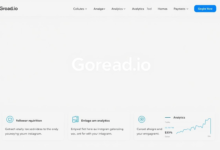When You Need More Than Search: Smart Document Understanding Alternatives

Most enterprises rely on keyword-based search to retrieve documents. But that breaks down in high-volume workflows where speed, accuracy, and compliance matter. Simple indexing tools can locate documents, but can’t extract precise data points or interpret meaning. For finance and insurance teams, each document has operational impact; missing one figure can disrupt reconciliation, audits, or reporting.
Finance and insurance teams handle forms with subtle variations across vendors or jurisdictions. HR and compliance teams need to interpret clauses, not just find matching keywords. Search may surface the document, but it won’t interpret the content, extract values, or flag exceptions that require action.
Manual retrieval, followed by data validation, consumes too much time. And that time adds up, especially when processing invoices, ACORD forms, or contracts at scale.
You need more innovative tools that can structure, classify, and analyze documents with context. Especially if you’re handling onboarding forms, delivery slips, lease agreements, or bank statements across multiple geographies.
What Smart Document Understanding Really Means
Smart document understanding means extracting actionable data, not just indexing text. It combines OCR, data annotation, classification, and business rule enforcement to create structured outputs from unstructured documents.
These systems:
- Read and extract structured values (e.g., invoice numbers, dates, totals)
- Distinguish document types, versions, and layouts
- Validate against internal rules (e.g., tax ID mismatch or payment term violations)
- Learn from human corrections using feedback loops
- Use AI to auto-classify, enrich fields, and support downstream analytics
This goes far beyond basic search. It enables true automation and insights across document workflows. For example, smart tools can detect mismatches in invoice totals or identify unsigned contract sections in legal documents.
HR and legal teams benefit from clause identification in contracts, while lenders can automate the parsing of complex rent rolls. These tools not only find files—they extract the right data and highlight what’s missing or inconsistent.
Signs It’s Time to Go Beyond Search
You may not need a full overhaul, but if these issues sound familiar, your current system is limiting efficiency:
- Your team rechecks every invoice after retrieval for errors or missing values
- You process unstructured data from vendors, suppliers, or legacy systems
- Document classification errors affect financial or compliance reporting
- Manual metadata tagging slows down retrieval and reviews for audits
- Search doesn’t detect field-level anomalies like missing bank codes or expired IDs
Once your document volume or complexity increases, basic search tools will fall short. If you’re working in high-stakes environments like finance, compliance, or logistics, accuracy and auditability aren’t optional.
Top Alternatives That Offer Real Understanding
If you’re exploring IBM Watson Discovery alternatives, it’s worth comparing them with newer tools that provide richer contextual understanding and automation.
1. Docsumo
- Built for document-heavy teams in finance, insurance, logistics, and lending
- Extracts and validates field-level data with 95%+ accuracy
- LLM-powered enrichment for filling gaps and applying logic
- Excel-style rules and validations with feedback loops
- Integrates with APIs, email inboxes, and webhook systems
Ideal for: Enterprises replacing manual reviews with automation, audit-ready processing, and contextual document understanding.
2. Microsoft Syntex
- Adds AI models to SharePoint for metadata tagging and content understanding
- Good fit if your data lives entirely inside the Microsoft 365 ecosystem
- Uses pretrained models and Power Automate for workflow setup
- Not suited for custom validations or domain-specific parsing
Ideal for: Microsoft-first teams needing light automation and classification.
3. Elastic with ML Plugins
- Extends Elasticsearch with NLP and ML pipelines for classification
- Indexes text fields while applying ML-based pattern recognition
- Requires significant developer input for setup and tuning
Ideal for: Developer-led teams building in-house enrichment tools over search infrastructure.
4. Amazon Textract + Comprehend
- Extracts text from documents using OCR
- Integrates with Comprehend for sentiment, entity recognition, and language support
- Configuration-heavy and lacks native domain-specific validation rules
Ideal for: AWS-native systems needing OCR + NLP layers without business rule processing.
If you’re considering tools like Landing AI alternatives, these platforms offer structured processing with built-in intelligence suited for high-volume, high-risk workflows.
Where These Tools Fit in Document Workflows
| Tool | Document Parsing | Validation Rules | Classification | Integration | Ideal Use Case |
| Docsumo | Advanced | Yes | High | API/Webhook/Email | End-to-end document automation |
| Microsoft Syntex | Moderate | Limited | Moderate | Microsoft 365 | SharePoint-based automation |
| Elastic + ML | Customizable | Custom Logic | High | Dev-heavy setup | Search-based document enrichment |
| AWS Textract | Basic | No | Moderate | AWS Cloud | OCR + Comprehend for custom NLP tagging |
Docsumo stands out with domain-ready models and custom logic layers, while the others excel in general-purpose use cases or developer-led customization.
How Smart Document Understanding Supports Compliance and Audit Readiness
For regulated industries, maintaining audit trails and compliance isn’t just about document storage—it’s about verifying the data inside those documents. Traditional search tools can’t flag inconsistencies or validate field-level compliance metrics.
Smart document understanding tools ensure each extracted value is traceable, validated, and stored with context. For example, they can:
- Track document lineage and version history
- Automatically log corrections and manual interventions
- Alert compliance teams when key fields (like tax IDs or due dates) are missing or incorrect
- Maintain structured audit trails that meet SOC 2, HIPAA, and GDPR standards
This reduces your risk exposure and makes audit preparation far less reactive and time-consuming. It turns documentation into a proactive compliance asset.
What to Ask Before Switching
Before moving from search to smart document understanding, evaluate your operational and compliance gaps. Ask:
- Do we need automation or just better retrieval?
- How many formats, document types, and languages do we process monthly?
- Is our compliance risk tied to misclassification or data loss?
- Do our current systems support end-to-end processing via API?
- Can our teams support model feedback and validation workflows?
Also consider downstream impact: Will your finance systems, HR platforms, or loan origination tools accept the extracted data in structured form?
Conclusion
Search is useful—but only when you know what you’re looking for. For document-heavy teams, it’s no longer enough. Smart document understanding tools offer more than access—they offer insight. They extract, interpret, and validate the data inside your documents.
Platforms like Docsumo reduce time-to-decision, minimize risk, and streamline compliance audits. If you’re still using search to solve document complexity, you’re missing out on productivity and accuracy.
Enterprise success today depends on context-aware tools that move beyond search and into true understanding.







